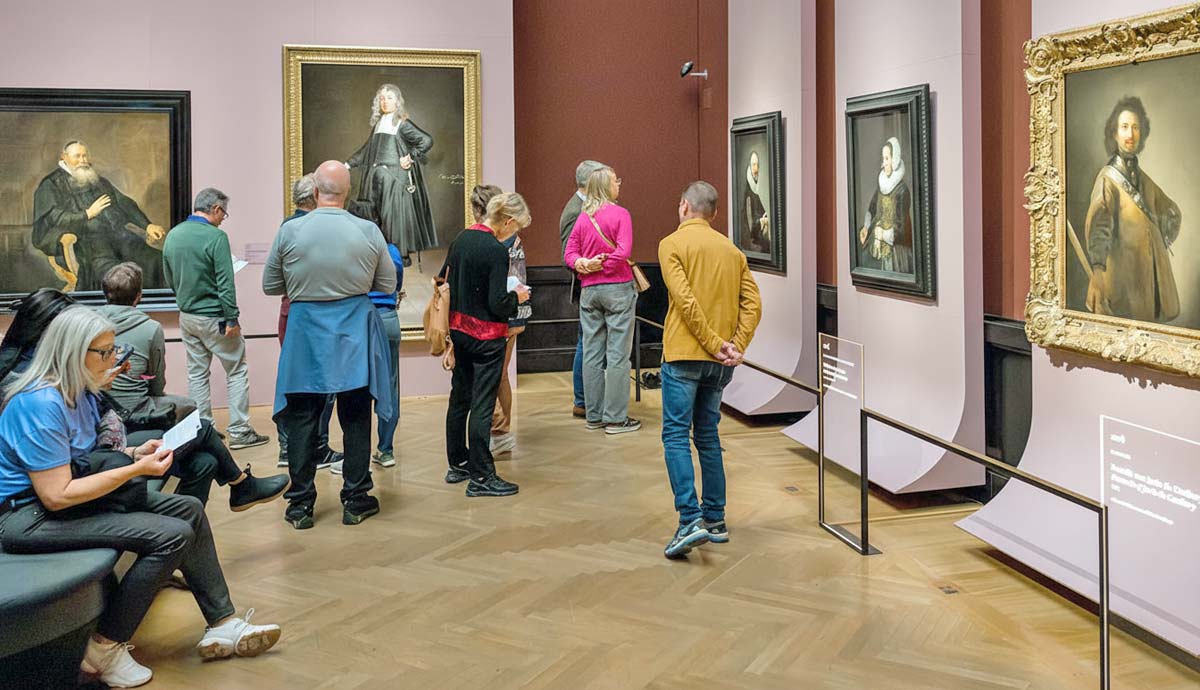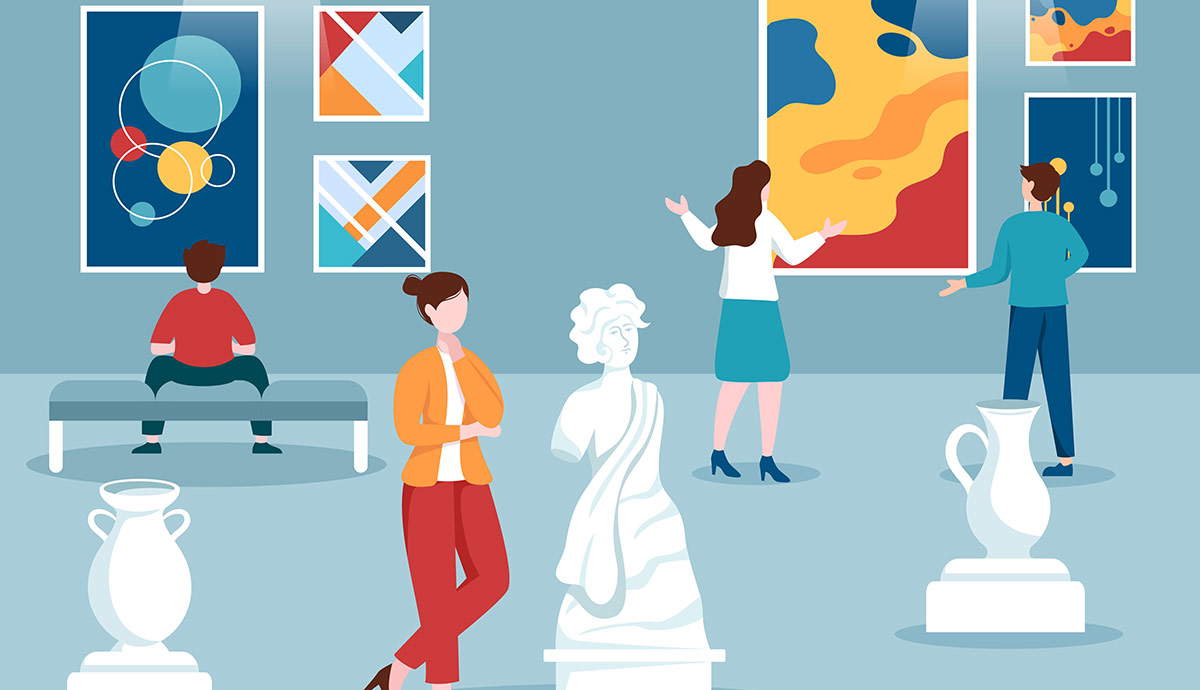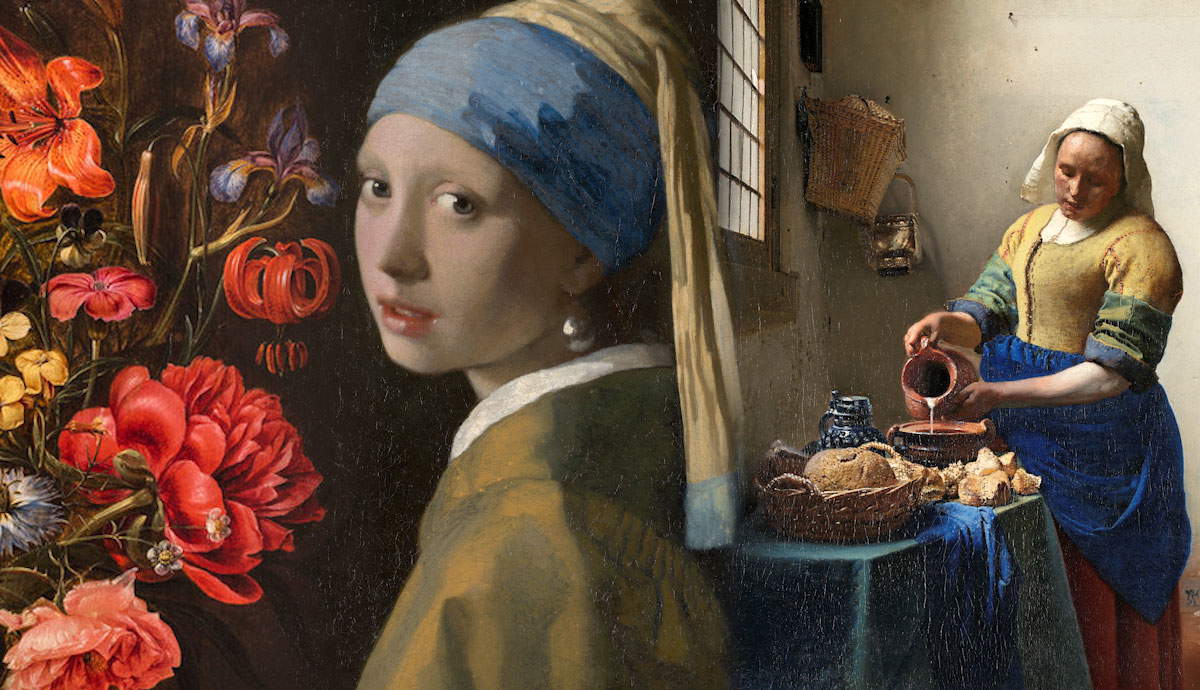
There are multiple phrases that one may encounter when looking at a work by an old master such as Rembrandt – “workshop/circle/follower of Rembrandt” versus simply “Rembrandt.” The ambiguous authorship of these works – often created by students, apprentices, or contemporaries – can be best understood as a consequence of the workshop model.
Development of the Art Market

The market for paintings exploded in the Dutch Golden Age as a result of the economic revival in Holland where a newly wealthy group of middle and upper class emerged. To meet the demand for artworks, 5-10 million paintings were created during the 17th and 18th century. Instead of working on commission for clients who dictated details and/or the overall design of the painting, artists catered to the new urban middle class, creating works with the expectation that a customer would buy.
Even ordinary Dutch households were furnished with art – in the rural province of Zeeland, farmers owned five to ten paintings on average. French historian and writer Jean Nicolas de Parival who lived in Leiden for 20 years wrote, “I do not believe that so many good painters can be found anywhere else; also the houses are filled with very beautiful paintings and no one is so poor as not to wish to be well provided with them.” The cheapest work sold for as little as a guilder, the daily wage of a skilled laborer, and the average Dutch painter produced two works a week.

Artists created works of varying qualities to appeal to different markets. The most prized were autograph works, which were created by the artist’s hand, often the original which was then replicated through workshop production. Copies were sometimes entirely created by assistants, with artists simply signing or adding finishing flourishes at the end. Artistic production in the Low Countries was heavily regulated through the guild system. Often named after Saint Luke, the patron saint of painters, guilds created systems to train young artists and market paintings. They restricted out-of-town works to foster the development of local schools, and thus were successful in forcing artists to join and comply with their rules.
Painters standardized their work through rigorous specialization and new styles of brushwork. For example, Jan van Goyen was famous for his sketchy landscapes with limited colors and very little detail which saved on production time as well as producing instantly recognizable works which were often copies of earlier output.
.
Issues of Attribution

Despite having a small number of known collaborators, there are a proliferation of works bearing the marks of Rembrandt’s style. Thus, terms like “workshop,” “circle,” “follower,” “in the style/manner of,” etc. are used to attribute works done in Rembrandt’s style but inconsistent with his materials or techniques. As his workshop was not as well-documented as his contemporaries like Peter Paul Rubens or Jan van Eyck, much of his work was assumed to be executed without assistants until 1969 when art historian Horst Gerson suggested that his pupils played a larger role in his studio than originally thought.

Rembrandt was a self-described “merchant,” selling autograph works as well as paintings executed entirely by apprentices as his own. He is known to have had at least 50 pupils, providing a lucrative income as well as a means for artwork production which he could sell under his name. Gerson suggests that it is almost impossible to identify works wholly executed by Rembrandt, suggesting that “even a signed Rembrandt [with the “Rembrandt” attribution] might have been executed by a pupil and perhaps only reworked by the master.” In contrast, a comparable Rubens only “reworked by the master” would only be described as “Rubens and Workshop.” Compared to the 1908 Rembrandt catalogue raisonné, which attributed over 800 works to Rembrandt, Gerson’s 1968 version lists only 420 paintings as autograph works.

Advancements in technology including x-rays and analysis of panel wood have revealed works thought to be original as copies. A particularly impactful discovery was the revelation of pouncing, a common technique used in duplicates and reproductions to transfer drawings to a primed surface, through infrared reflectography. The technique involved perforating the drawing and dusting it with charcoal, leaving behind small dots which are visible in IR imaging. Most recently, a self-portrait in the Mauritshuis collection, Portrait of Rembrandt with a Gorget, was revealed to be a copy of a work housed in the Germanische Nationalmuseum through the discovery of underdrawing beneath the paint layers.

The conditions of artmaking and the idea of the artist as an individual genius is a modern concept, whereas Rembrandt and his contemporaries operated under the master artist model allowing for the proliferation of artworks created under their workshop. As much a dealer as he was an artist, the “Rembrandt” attribution is better thought of as a brand with multiple entities with varying degrees of involvement.
Bibliography
Binstock, Benjamin. “Rembrandt’s Paint.” RES: Anthropology and Aesthetics, no. 36 (1999): 138–65. http://www.jstor.org/stable/20167480.
Bok, Marten Jan, and Tom van der Molen. “Productivity Levels of Rembrandt and His Main Competitors in the Amsterdam Art Market.” Jahrbuch Der Berliner Museen 51 (2009): 61–68.
Harris, Gareth. “Rembrandt works called into question by experts in the Netherlands.” The Art Newspaper. April 24, 2025. https://www.theartnewspaper.com/2025/04/24/rembrandt-works-called-into-question-by-experts-in-the-netherlands.
Honig, Elizabeth. “The Beholder as Work of Art: A Study in the Location of Value in Seventeenth-Century Flemish Painting.” Nederlands Kunsthistorisch Jaarboek (NKJ) / Netherlands Yearbook for History of Art 46 (1995): 252–97. http://www.jstor.org/stable/43875972.
Prak, Maarten. “Guilds and the Development of the Art Market during the Dutch Golden Age.” Simiolus: Netherlands Quarterly for the History of Art 30, no. 3/4 (2003): 236–51.
Rulkens, C.C.S., Peels, R., Stols-Witlox, M. et al. The attribution of two portraits of Rembrandt revisited: a replication study in art history. Humanit Soc Sci Commun 12, 1347 (2025). https://doi.org/10.1057/s41599-025-05523-2
Liedtke, Walter. “Rembrandt’s ‘Workshop’ revisited.” Oud Holland, Vol. 117, No. 1/2 (2004), pp. 48-73. https://eclass.asfa.gr/modules/document/file.php/AHT4108/Rembrandt%27s%20Workshop.pdf.
Wilson, Jean C. “Workshop Patterns and the Production of Paintings in Sixteenth-Century Bruges.” The Burlington Magazine 132, no. 1049 (1990): 523–27. http://www.jstor.org/stable/884349.








